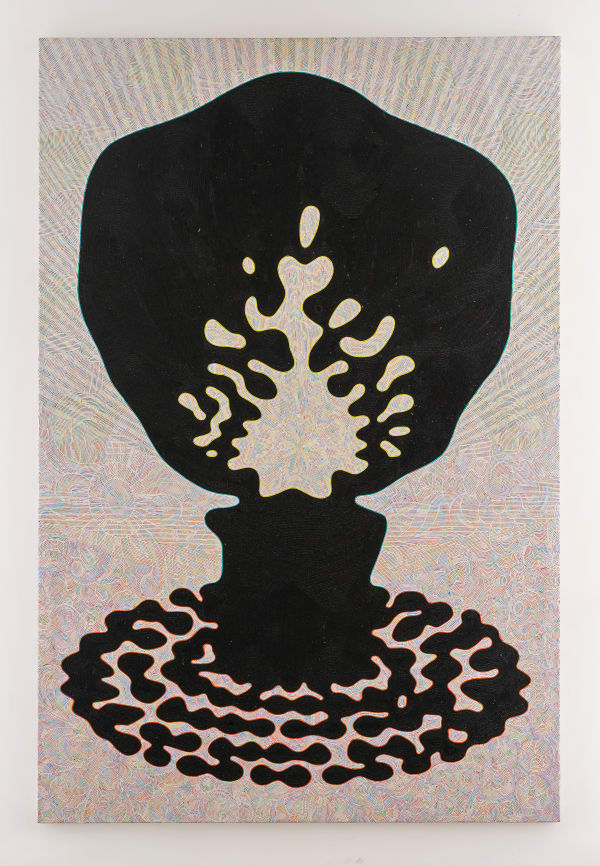Raised Eyebrow: Anant Joshi
Sculpture
Anant Joshi is a newspaper devourer. With the information surfeit one gets today through all the various sources, the daily news from hard copy papers is the primary “feeder” to Joshi’s art practice.
The artist comes upon an almost comic episode of a common citizen from Madhya Pradesh who had filed an RTI (Right To Information) to the PMO’s office asking about the whereabouts of the original 3 Monkeys – a miniscule toy-like sculpture that was kept by Gandhi. The pursuant citizen Z was informed through his inquiry 3 years later, that the monkeys were (now) housed (as large sculptures) at Sabarmati Ashram in Ahmedabad!
If one wonders about the ‘serious nature’ of such complaints, this episode was not lost on Joshi. It was possibly a trivial case of an even more trivial story, but loaded with irony.
The original statue that remained with Gandhi through his life – sited as an example to his million followers of “see no evil, hear no evil, speak no evil” (but now gone missing) – has in fact become an ode to our times with its replicas floating in and around the various Gandhi ashrams. Making a parallel of Gandhi’s lost monkeys, Joshi’s sculpture titled “Missing - Flowers of the Wilderness” is a beautifully crafted bronze version, veiled behind a more colourful counterpart made in fiberglass – creating his own story of the missing monkeys.
Light boxes
Once again, an image, forgettable to most, caught Joshi’s eye. A gathering of people around a registrar’s office table in Orissa, looking keenly for something; it turns out, it’s their names they are looking for.
Do they exist?
Have they been obliterated?
Joshi cuts out the image and goes extremely close to the clothes they wear. He then punches out swatches that are mere microcosmic details, giving us a very close reading of colour, and loose threads that these images become after being viewed through a micro-lens. These abstractions which almost look like multicolored blobs of colour – gives some indication of its texture simply because of the fine threads. It is these images that are then put behind light boxes.
Once again, Joshi goes close to the bone – nuanced in its meaning – a fact once uttered (now among a hundred others)… “that people would be identified by the colour of clothes they would wear.”
We don’t need lists, we don’t need paperwork.
Joshi creates a work that spells it out – in all its glorified abstraction but makes us look at it through the lens of a light box; in fact exaggerating the intent of making this work.
Paintings
And then what constitutes the main part of the exhibition are 9 large canvas paintings.
What is mindboggling about these works is the amount of labor that goes into their making. What lies below the visible surface is a painterly, colorful rendering of images, which are then painted upon with large (unrecognizable) blobs or gauche patterns that are an attempt to mask newspaper photographs. These resemble mirror landscapes where the entire painting is then layered upon with shiny gift-wrapping paper. The under colour is completely obliterated! While these blobs may be read as “blindspots”, titles often reveal what these images could be. These large abstract forms come from Klecksography* patterns that deter the viewer from direct interpretations.
We are live in very particular times where censorship demands a very specific response. What the artist attempts to convey through the blips and beeps from media and the state that could amount to muting speakers or masking events with patches, turn into jokes, memes and images of resistance. No matter how many obstacles we may encounter, the only thing we have to avoid is a failure of will.
*Klecksohraphy is the art of making images from inkblots
Written by Shireen Gandhy
-
 Anant Joshi, Binoculars with Earphone, 2023
Anant Joshi, Binoculars with Earphone, 2023 -
 Anant Joshi, Empty Clock Case, 2023
Anant Joshi, Empty Clock Case, 2023 -
 Anant Joshi, Man Standing - with Helmet, 2023
Anant Joshi, Man Standing - with Helmet, 2023 -
 Anant Joshi, Matchstick Nest, 2023
Anant Joshi, Matchstick Nest, 2023 -
 Anant Joshi, Missing - Flowers of the Wilderness, 2023
Anant Joshi, Missing - Flowers of the Wilderness, 2023 -
 Anant Joshi, Missing - Flowers of the Wilderness, 2023
Anant Joshi, Missing - Flowers of the Wilderness, 2023 -
 Anant Joshi, Missing - Flowers of the Wilderness, 2023
Anant Joshi, Missing - Flowers of the Wilderness, 2023 -
 Anant Joshi, Moustache Men, 2023
Anant Joshi, Moustache Men, 2023 -
 Anant Joshi, Peacock on Pedestal, 2023
Anant Joshi, Peacock on Pedestal, 2023 -
 Anant Joshi, Raised Eyebrow, 2023
Anant Joshi, Raised Eyebrow, 2023 -
 Anant Joshi, Thunderstruck Typewriter, 2023
Anant Joshi, Thunderstruck Typewriter, 2023












